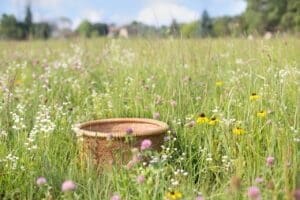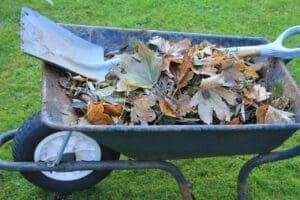Gardening with children is more than just a fun activity; it’s a wonderful way to introduce them to the wonders of nature and the environment. Engaging kids in growing plants offers a unique blend of entertainment and education, creating precious moments together while nurturing their curiosity and love for the outdoors.
In this article, we’ll explore the numerous benefits of gardening with children. From fostering a sense of responsibility to enhancing their understanding of the natural world, the advantages are as abundant as they are significant.
We’ve also compiled a list of 10 of the best plants to grow with children. Our selection focuses on plants that are not only easy to grow but also incredibly rewarding for young gardeners. These choices are perfect for sparking a lifelong passion for gardening and for celebrating the small yet significant victories of watching something grow from seed to bloom or harvest.
You might also be interested in: How to Make Cress Heads with Cotton Wool
10 of the best plants to grow with children
- Sunflowers
- Sweet Peas
- Poppies
- Spring Bulbs
- Radishes
- Cherry Tomatoes
- Cress
- Herbs
- Strawberries
- Pumpkins
1. Sunflowers

Sunflowers are an excellent choice for a gardening project with children. Their seeds are just the right size for little hands to handle, making them perfect for young gardeners. Plus, they’re quite easy to germinate, which is great for keeping kids excited and engaged in the process.
These cheerful plants thrive in sunny spots and grow quickly, offering almost immediate gratification for impatient young growers. The reward is even greater when their large, vibrant flowers bloom, bringing a burst of color to your garden.
For an added element of fun, why not turn it into a family challenge? See who can grow the tallest sunflower! This friendly competition not only adds excitement but also encourages children to take an active interest in caring for their plants.
Read our related post: How To Grow Sunflowers
2. Sweet Peas
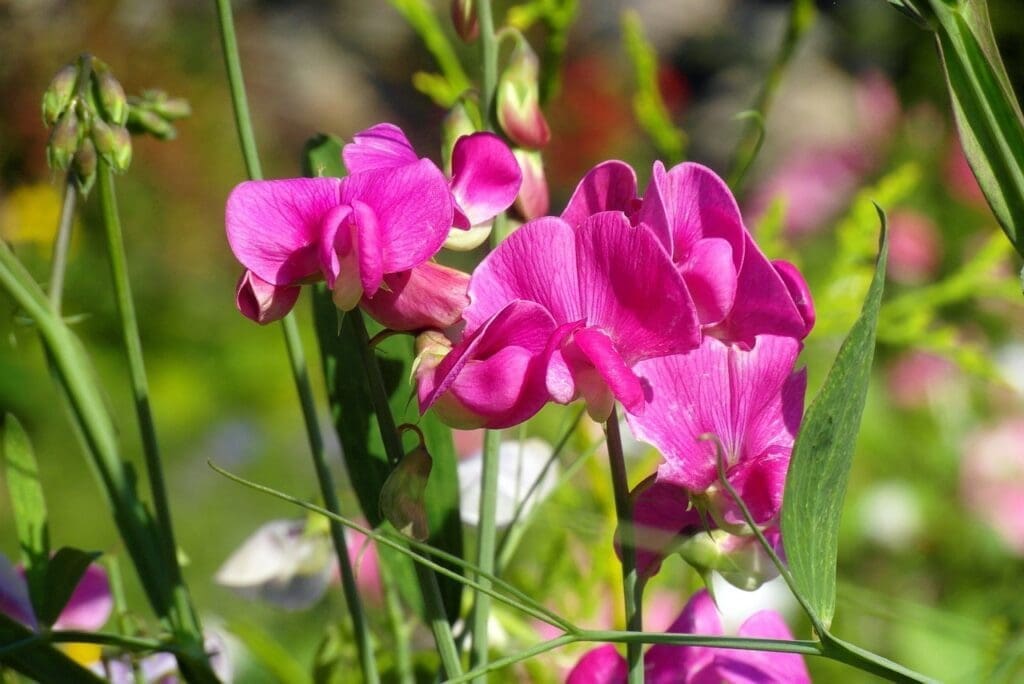

Sweet Peas are another fantastic plant to grow with children. Their seeds are nicely sized for small fingers, making them easy and enjoyable for kids to handle. These seeds also germinate without much fuss, offering a rewarding gardening experience for the little ones.
Once your Sweet Pea seedlings are healthy and strong, you can plant them outside, but be sure to wait until the risk of frost has passed. If you’re limited on garden space, don’t worry – Sweet Peas also do well in containers. Opt for tall containers as Sweet Peas’ roots thrive when they have room to grow downwards.
Growing Sweet Peas is not just about the beautiful flowers; it’s also a chance to teach children about nature’s helpers. These plants are excellent at attracting bees and other pollinators, making them a perfect addition to a wildlife-friendly garden. Plus, Sweet Peas make lovely cut flowers, so you can bring a bit of your garden’s beauty indoors.
Read our related post: How To Grow Sweet Peas
3. Poppies


Poppies are a wonderful choice for introducing children to the joys of gardening. These plants are not only versatile and resilient but also incredibly easy to grow and care for. This makes them ideal for young, budding gardeners who are just starting to explore the world of plants.
One of the great things about poppies is their appeal to pollinators. Planting them in your garden will attract a lively buzz of bees and butterflies, creating a vibrant and eco-friendly space. This is a fantastic way to teach children about the importance of pollinators in our ecosystem.
Read our related post: Poppies Growing Guide
4. Spring Bulbs
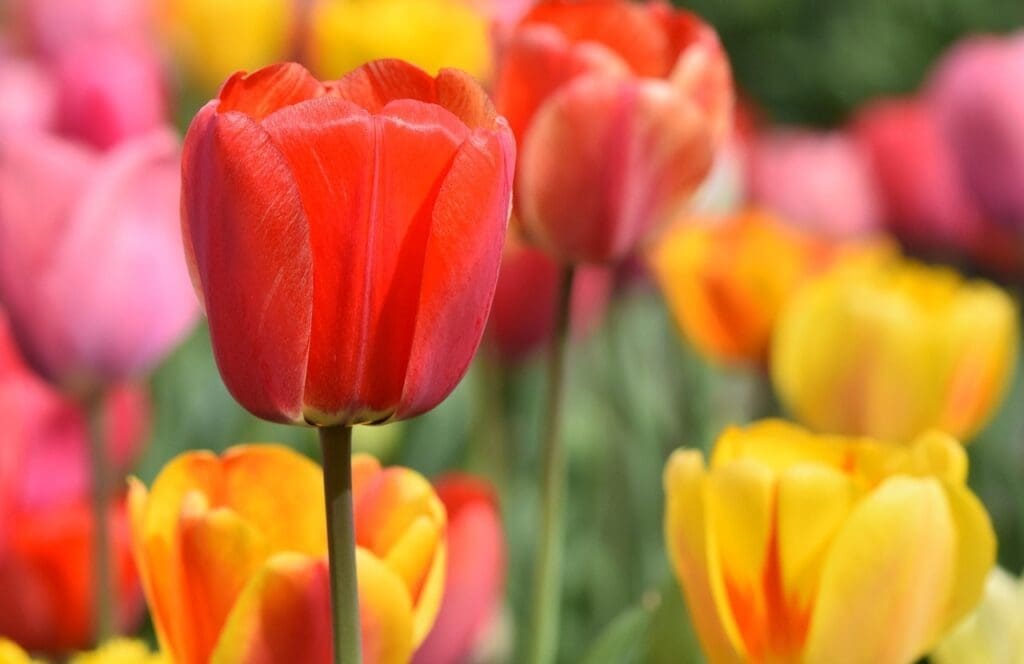

Spring bulbs like daffodils, tulips, and alliums are perfect for gardening with children. Planting bulbs is a simple and rewarding autumn activity, and it sets the stage for a beautiful display come spring. Watching these bulbs transform into vibrant flowers can be a magical experience for both you and your child.
Alliums, in particular, are a fantastic choice for those looking to attract pollinators. They are known for drawing in bees and butterflies throughout early summer, making your garden a buzzing hub of activity. Their appeal doesn’t end with their bloom; alliums are striking plants that add an architectural element to your garden. Even as they fade into autumn and winter, their seed heads continue to provide visual interest.
Read our related blog posts on how to grow Alliums, Daffodils, Snowdrops, and Tulips.
5. Radishes
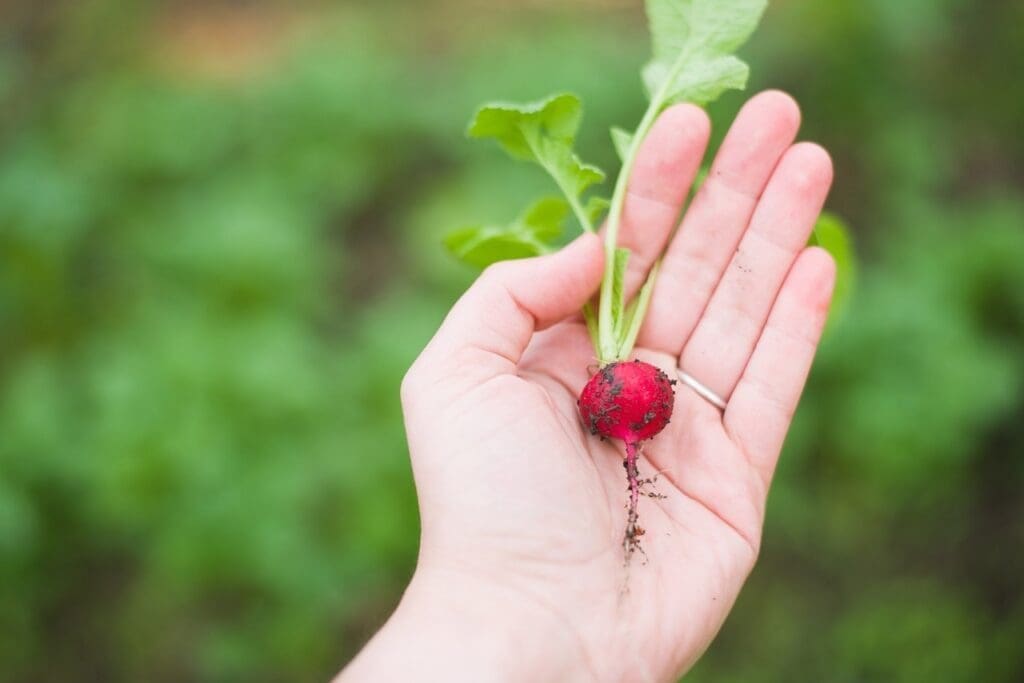

Radishes are an excellent choice for a child-friendly gardening project. They are not only quick-growing but also incredibly easy to cultivate, making them perfect for young gardeners. Their compact size means they can be grown in small spaces or containers, ideal for kids who might not have access to a large garden.
You can start sowing summer varieties of radishes as early as March and continue through August. For winter varieties, August is the perfect time to plant. This flexibility allows children to engage in gardening throughout different seasons.
One of the best things about radishes is their rapid growth rate. They’re ready to harvest in just 3-4 weeks! This quick turnaround is particularly satisfying for children, as they can quickly see the results of their efforts. Growing radishes can be a fun way to introduce kids to the joys of gardening and the excitement of harvesting their own food.
6. Cherry Tomatoes


Cherry tomatoes are a fantastic choice for gardening with children. Not only are they easy to grow, but their small size and sweet flavor are often a hit with the little ones. Whether you have a garden bed or just a few pots, cherry tomatoes are versatile enough to thrive in either setting.
Start by sowing the seeds in pots, ideally indoors or in a greenhouse, to protect them from any late frosts. This is usually done around late May. It’s a great indoor activity that can engage children in the early stages of plant growth. Once the first flowers appear on your tomato plants, it’s a sign they’re ready to move outside. You can transplant them into the ground or into larger pots, depending on your space.
Watching cherry tomatoes grow and eventually harvesting their juicy fruits can be incredibly rewarding for children. It teaches them about the plant life cycle and gives them the satisfaction of eating something they’ve grown themselves.
7. Cress
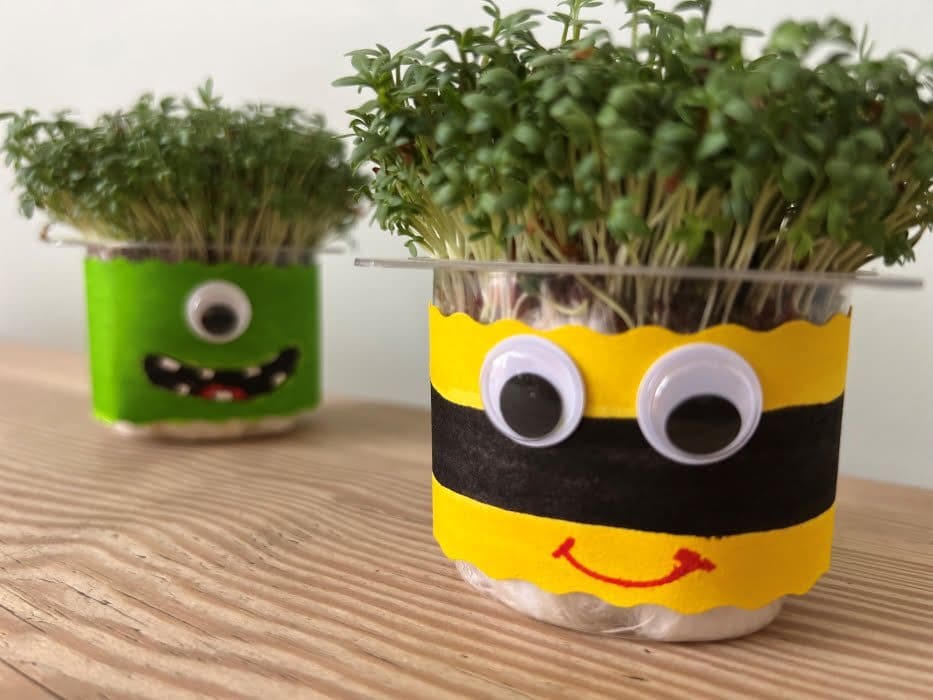

Cress is arguably the easiest and most accessible plant to grow with children, making it a top choice for introducing them to the joys of gardening. The best part? You don’t even need a garden or outdoor space. Cress can be grown indoors throughout the year, making it a fantastic all-season project.
All you need is a shallow container and a bright windowsill. Cress seeds are incredibly fast to germinate, often sprouting in moist cotton wool in as little as 24 hours. Within just a week, you’ll have cress ready to be snipped and added to sandwiches or salads.
This quick turnaround from planting to harvesting makes cress an exciting and rewarding experience for children. It’s a wonderful way to teach them about plant growth and the satisfaction of eating something they’ve grown themselves, even in a small indoor space.
You may also be interested in: How to Make Cress Heads with Children
8. Herbs
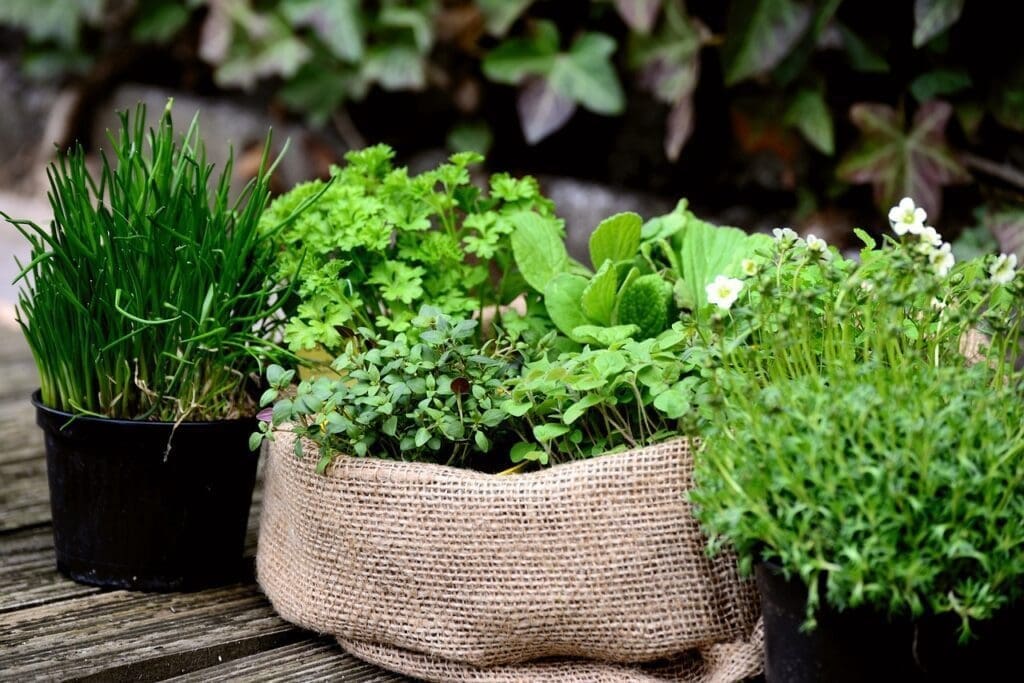

Herbs like mint, parsley, and coriander are not only easy to grow but also wonderfully versatile. They can thrive in pots or in the ground, making them suitable for various gardening spaces. Whether you have room for a full herb garden in a raised bed or just a few pots on a kitchen windowsill, these herbs are perfect for young gardeners.
Growing a herb garden offers a sensory experience that children will love. They can touch, smell, and taste the fresh herbs they’ve nurtured, providing a hands-on learning experience about where food comes from. The joy of snipping herbs they’ve grown themselves to add to meals can be incredibly rewarding.
This project is a great way to introduce kids to a variety of flavours and scents, encouraging them to explore and appreciate the natural world. Plus, having a range of herbs at your fingertips is not only convenient for cooking but also adds a burst of greenery to your home.
9. Strawberries
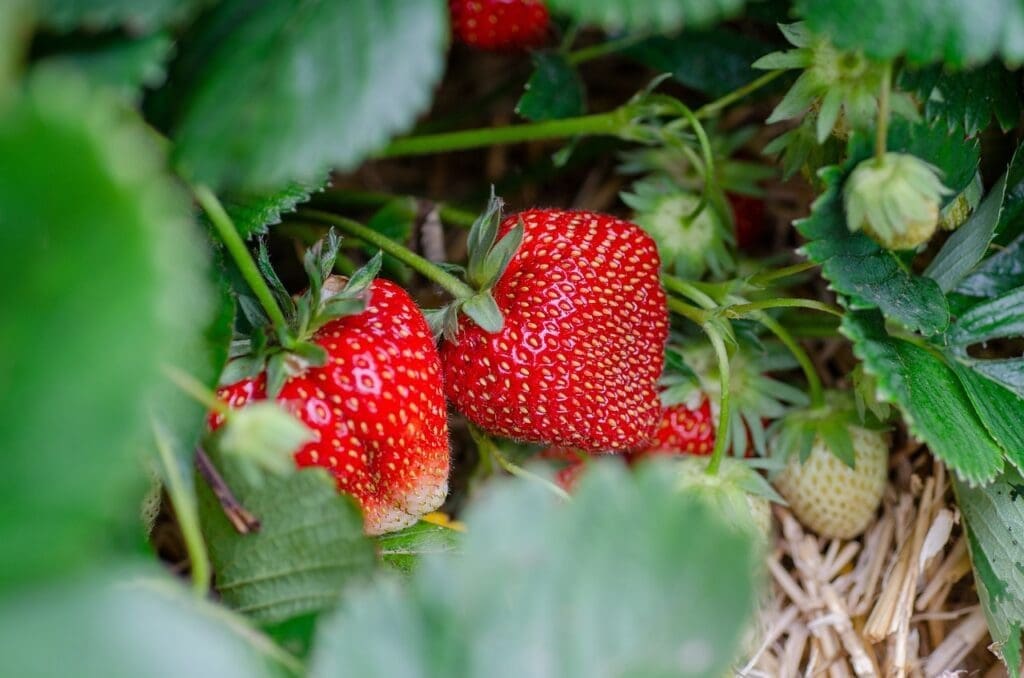

Strawberries are a fantastic choice for gardening with children due to their ease of growth and delicious rewards. These delightful fruits can be grown in various settings – in the ground, in containers, or even in hanging baskets, offering flexibility for any garden size.
To ensure a bountiful harvest, place your strawberry plants in a sunny spot in your garden. Sunlight is key to their growth. Regular watering is also essential to keep the plants healthy and productive. Involve your children in the watering process; it’s a great way to teach them about plant care.
The most exciting part for kids will undoubtedly be the harvest. Strawberries are ready to pick when they turn big, red, and juicy. This is a wonderful opportunity for children to learn about how fruits ripen and the joy of eating something they’ve grown themselves. The experience of picking ripe strawberries straight from the plant is not only fun but also incredibly satisfying.
10. Pumpkins
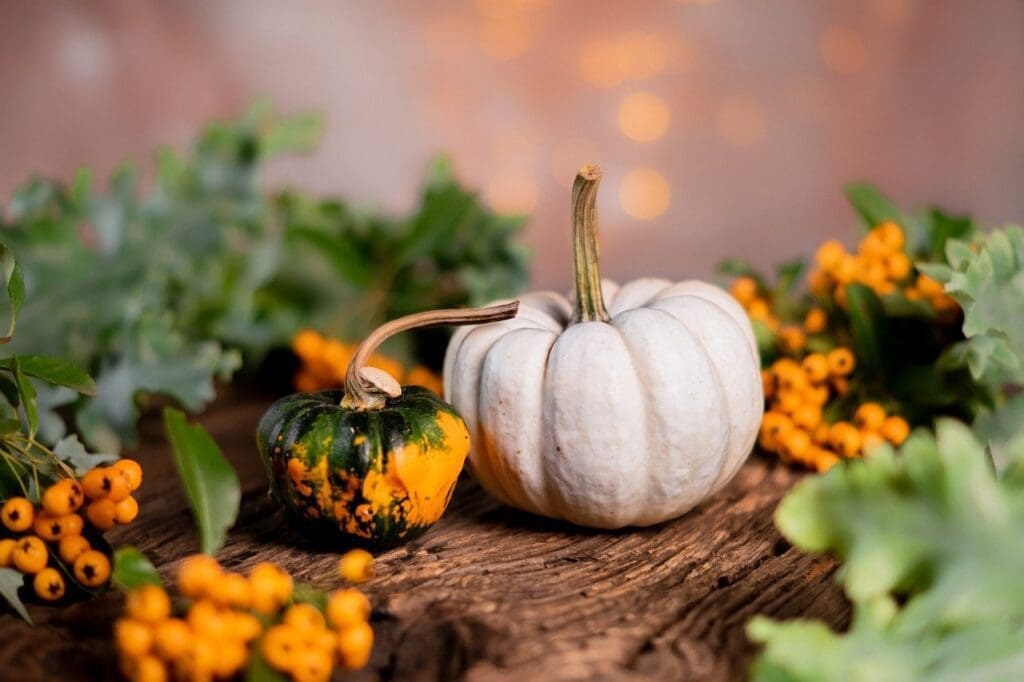

Growing pumpkins with children is not only easy but also incredibly exciting, especially as Halloween approaches. The anticipation of harvesting their own pumpkins for carving or cooking can be a real thrill for young gardeners.
To start your pumpkin adventure, sow the seeds indoors in April. This early start gives the seedlings a chance to grow strong enough for transplanting. Place them on a sunny windowsill and watch them sprout. It’s a great way for kids to observe the early stages of plant growth.
Once your pumpkin plants are sturdy enough, and the risk of frost has passed (usually around the end of May), it’s time to move them outdoors. Choose a sunny spot in your garden with plenty of room for the pumpkins to spread out. Regular watering is key to keeping the plants healthy and helping them grow.
As the pumpkins begin to grow, you can even give them a little boost with tomato feed. This extra nourishment can help them develop into robust and healthy pumpkins. Watching the pumpkins grow from tiny seedlings to large, orange fruits is a rewarding experience for children and a wonderful way to connect them with the cycle of the seasons.
The Many Benefits of Gardening with Children


- Fostering Responsibility
- Gardening is a wonderful way for children to learn responsibility and respect for living things. As they care for their seedlings, they’ll learn crucial skills like regular watering, repotting, and ensuring the plants get enough sunlight.
- Educational Value
- Growing plants offers hands-on learning about plant biology. Children will discover the different parts of plants and understand essential needs like sunlight and water, gaining insights into how these factors affect growth.
- Encouraging Physical Activity
- Gardening is an excellent physical activity, encouraging kids to step away from screens and enjoy the outdoors. It’s a healthy way to stay active, get some fresh air, and engage in physical movement.
- Boosting Emotional Well-Being
- The benefits of gardening extend to emotional health. It’s known to reduce stress, improve mood, and enhance self-esteem, making it a nurturing activity for children’s mental health.
- Developing Social Skills
- Gardening can teach valuable social skills like teamwork, communication, and collaboration. In community or school gardens, it fosters a sense of togetherness as children work collectively to care for their garden.
- Cultivating Patience
- In a world of instant gratification, gardening teaches patience and appreciation for slow, steady growth. It’s a great way for children to learn the value of perseverance and enjoy being part of a longer-term process.
Top Tips for Successful Gardening with Children
Tip 1: Create a Growth Chart
- Encourage your child to make and maintain a growth chart for their plants. Recording the height each week not only teaches them how to measure but also fosters patience. Watching their plants grow over time can be a thrilling and educational experience.
Tip 2: Give Them Their Own Gardening Space and Tools
- Assigning a specific area in the garden or even a couple of plant pots for your child can give them a sense of ownership and pride. Equip them with their own gardening tools to enhance their sense of responsibility. This approach not only empowers them but also keeps your own prized plants, like those cucumbers, safe from enthusiastic little hands!
Tip 3: Encourage Experimentation and Learning from Mistakes
- Remember, even expert gardeners learn from mistakes, and so can children. If your child wants to plant a sunflower in a shady spot, let them try it out. You can also have backup plants in sunnier spots. Conducting small experiments, like placing sunflower seedlings in various locations, can be a fun and educational way to learn about different growing conditions.
Gardening with children is not just about the end result; it’s about the journey of learning, experimenting, and growing together. These tips can help make the experience both rewarding and enjoyable for you and your little ones.
Recommended Gardening Equipment for Children



Content includes affiliate links
Gardening Books for Children





Content includes affiliate links





